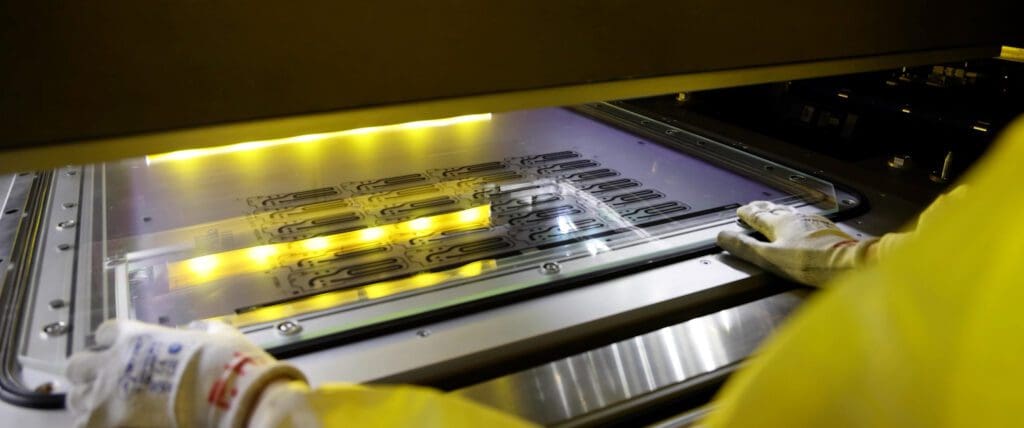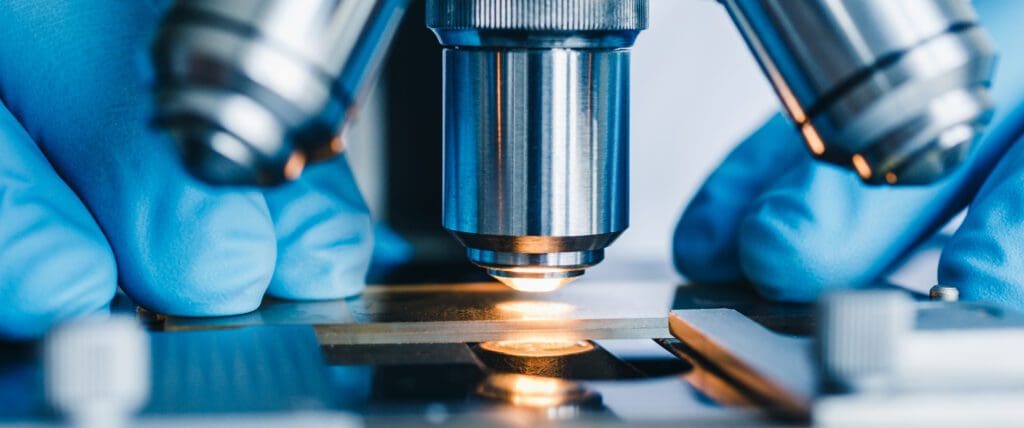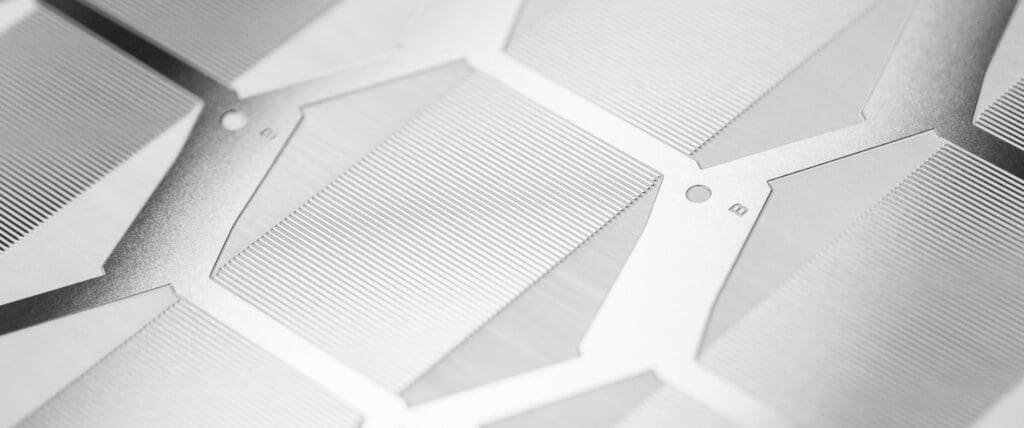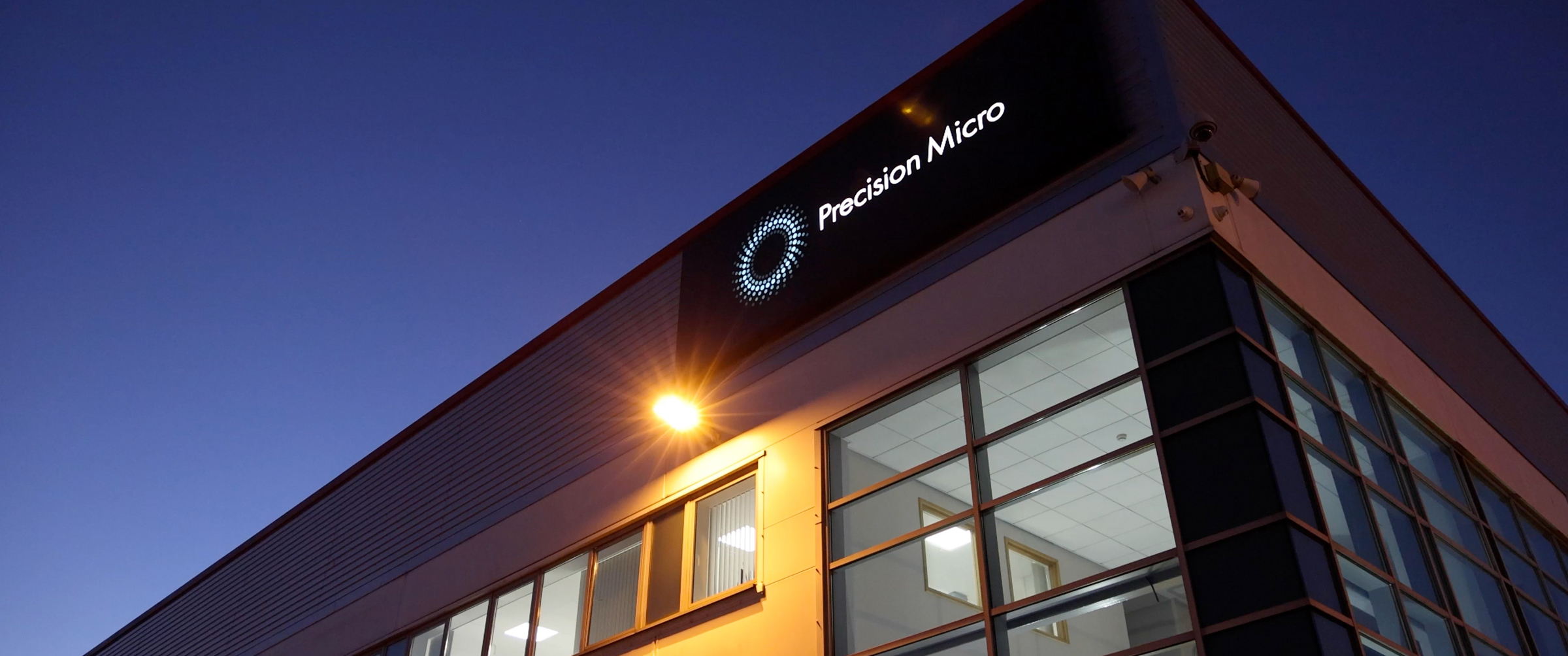10 design tips for more cost-effective photochemically etched parts
Designing sheet metal components with fine features and tight tolerances can be challenging — especially when time, cost, and performance are all critical. Photochemical etching offers a flexible, accurate, and cost-effective solution, particularly when the design is optimised for the process. Here are ten proven design tips that will help you get the most from it.

1. Design with Material Thickness in Mind
Etching is most effective when the smallest feature (such as a slot width or web) is equal to or greater than the metal’s thickness. For example, in 0.2 mm thick material, aim for no features smaller than 0.2 mm. Note that the smallest through-etched feature size we offer is 0.1 mm.
Tip: Download our Design Guide for material-specific recommendations.
2. Maximise Material Yield — You’re Paying for the Sheet
Photochemical etching is costed by the sheet, so the more components you can fit onto it, the more cost-effective the process becomes. Optimise your part size and layout to maximise sheet utilisation and reduce material waste.
Design Note: During development, it may be possible to group similar parts together on a single sheet.
3. Use Consistent Feature Sizes
Try to maintain a consistent minimum feature size across your part. This allows for more predictable etching behaviour and reduces inspection complexity. We can, of course, develop tooling where consistent sizing isn’t possible, but this may add to development time and cost.
4. Consider Tolerances Carefully
Photochemical etching offers tight tolerances — often ±10% of material thickness, to a minimum of ±0.025 mm. However, avoid specifying unnecessarily tight tolerances across the entire part. Apply them only where functionally required, as this will save both time and money.
5. Minimise Sharp Internal Corners
Chemical etching naturally produces slightly rounded internal corners due to the isotropic nature of the process. If sharp corners are functionally necessary, special design allowances may be required.
6. Plan for Tabs or Carriers
Very small, fragile, or tightly toleranced components will often need to be retained in the metal sheet using tabs or a carrier frame. Tabs will leave a small recessed or protruding metal stand on the finished part, so consider your preferred tab type and location.
Tip: Read our guide to etching tabs.
7. Design for Multi-Stage Etching
Etching occurs from both sides of the material, and depths can be controlled with precision, enabling multi-stage etching. This is ideal for features such as flow channels in fluidic plates. For best results, keep etch depth from either side consistent. Note that depth features such as channels will also etch laterally at approximately twice the etch depth.
See also: Chemical Etching Capabilities
8. Take Advantage of Half-Etched Features
Partial-depth (half-etched) features can be included in a single etch stage to create location points, fold lines, or surface text — all without the need for additional tooling. Just ensure the required etch depth is within process capability. If in doubt, get in touch.
9. Factor in Grain Direction and Downstream Processes
Although grain direction has little impact on etching itself, it can affect secondary processes such as forming or bending, where alignment may aid hand forming or prevent cracking. Also consider post-etch steps such as plating or coating, and design to avoid features that could complicate tooling.
10. Consult Early with Us
The best designs come from collaboration. Engage Precision Micro early in the development cycle so we can advise on opportunities to reduce cost, improve manufacturability, and prevent issues later in production.
Let’s Talk: Submit your design
Summary
Photochemical etching enables engineers to design without many of the constraints imposed by traditional machining methods. By applying these ten design tips, you can unlock the full potential of the process, reduce unnecessary costs, and streamline your path from prototype to production.
Chemical Etching Whitepaper
Learn how chemical etching can overcome the limitations of traditional sheet metal machining technologies.
Download






